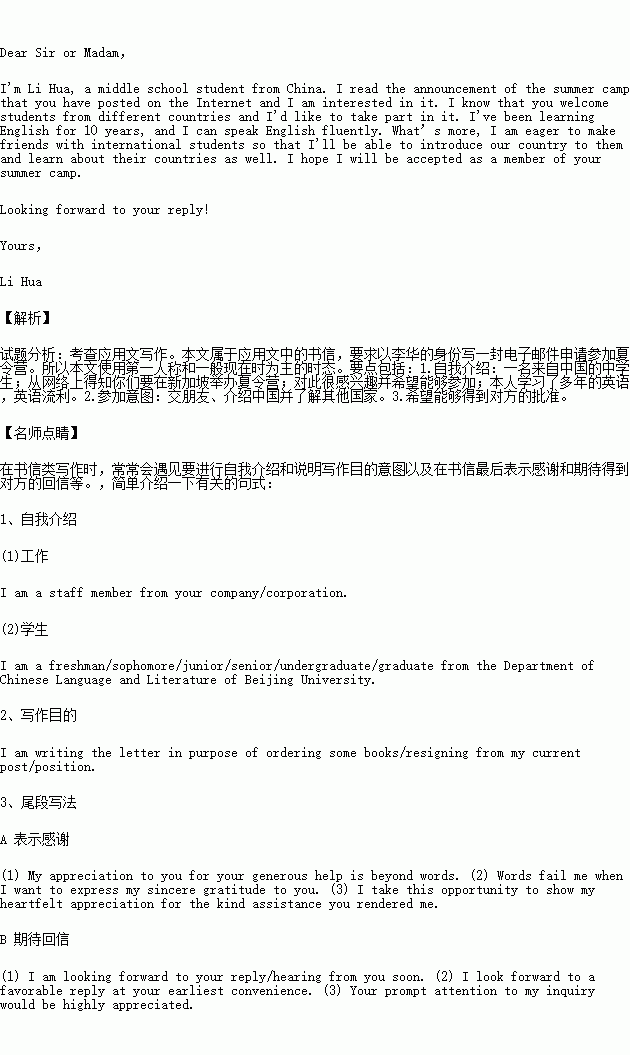题目内容
书面表达
假定你是李华,从互联网(the Internet)上得知一个国际中学生组织将在新加坡(Singapore)举办夏令营,欢迎各国学生参加。请写一封电子邮件申请参加。
内容主要包括:
1.自我介绍(包括英语能力);
2.参加意图(交朋友、介绍中国、了解其他国家);
3.希望获准。
注意:1.词数100左右;
2.可以适当增加细节,以使行文连贯;
3.邮件开头和结尾已为你写好。
Dear Sir or Madam,
Yours,
Li Hua
练习册系列答案
相关题目

